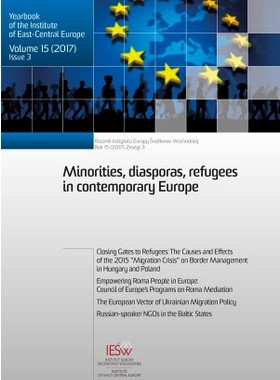“Take Back Control of Our Borders”: The Role of Arguments about Controlling Immigration in the Brexit Debate
“Take Back Control of Our Borders”: The Role of Arguments about Controlling Immigration in the Brexit Debate
Author(s): Simon GoodmanSubject(s): Government/Political systems, Migration Studies, EU-Approach / EU-Accession / EU-Development, Asylum, Refugees, Migration as Policy-fields
Published by: Instytut Europy Środkowej
Keywords: Brexit; immigration; discourse analysis; borders; European Union;
Summary/Abstract: In the run-up to Brexit, the British referendum on leaving the European Union (EU), immigration was one of the top issues of concern to voters. Discussions about immigration dominated the campaigns, with the “Vote Leave” campaign linking leaving the EU with the opportunity to prevent immigration into the United Kingdom (UK). The focus on this was in part due to the migration and ‘refugee crisis’ in Europe that coincided with the referendum. This paper presents an analysis of how the key players in the Brexit debate focused on immigration. The question is, therefore, how did the participants in the Brexit debate talk about immigration and what did this talk accomplish. Discourse analysis of campaign coverage reveals that: 1. Leave campaigners presented immigration as out of control, including that from within and outside of the EU and those arriving in Europe as refugees; 2. “Remain” campaigners presented Brexit as an ineffective way of controlling migration; and, 3., in limited cases, immigration was presented as beneficial. The conclusion is that the focus on immigration appeared to have been a major factor in the eventual success of the Leave campaign. Although it remains to be seen what impact Brexit will have on immigration, opposition to immigration has become mainstream.
Journal: Rocznik Instytutu Europy Środkowo-Wschodniej
- Issue Year: 15/2017
- Issue No: 3
- Page Range: 35-54
- Page Count: 20
- Language: English

